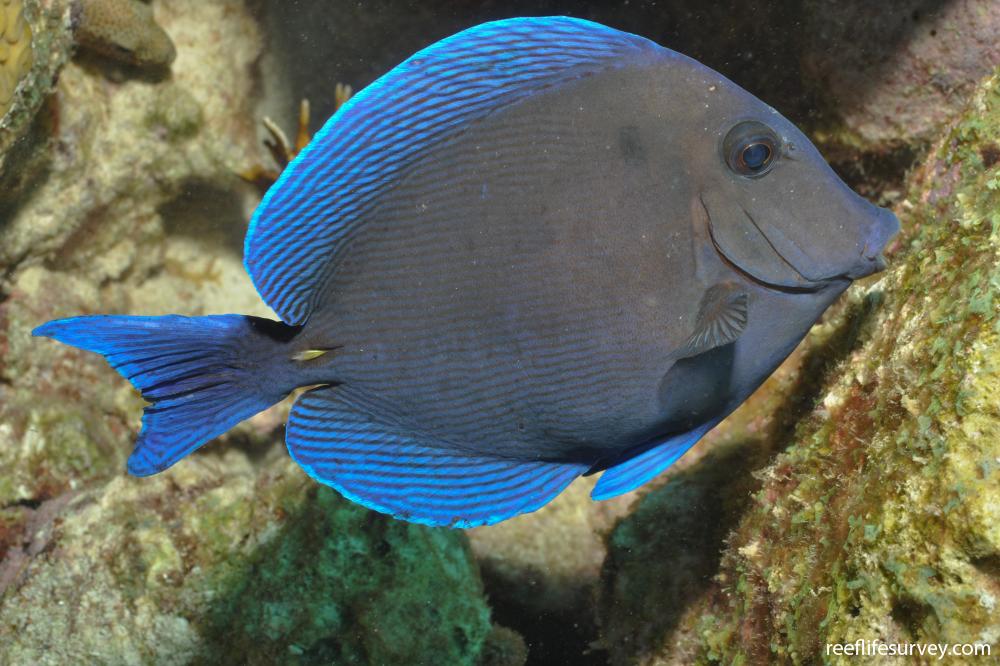Acanthurus coeruleus
Blue tang surgeonfish | Blue Tang | Blue Doctorfish | Blue Barber | Blue Surgeonfish | Yellow Barber | Yellow Doctorfish | Blue DoctorSimilar Species
Same Genus
Distribution
Tropical Atlantic/Caribbean
Description
Bluish-grey body with faint wavy lines along body and fins, tail spine yellowish and eye with a blue ring. Juveiles bright yellow with blue margins on dorsal and anal fin. Can form large feeding aggregations, often with other surgeon fish species which graze on algae. Juveniles sometimes act as cleaners to Green Turtles (Chelonia mydas).
Information
Max Size: 39 cm
Sea Temperature Range: 22.3-30.9°C
Depth: 2-40m
Habitat Generalization Index: 29.05
Also referred to as the SGI (Species Generalisation Index), this describes the habitat niche breadth of the species. Species with values less than 15 are found in a relatively narrow range of reef habitat types (specialists), while those over 25 may be found on most hard substrates within their range (generalists). Learn more here.
Conservation and Rarity
IUCN Status: Least Concern
Occurrence: Common (45.5% of sites)
Occurrence describes how often the species is found on surveys within its distribution. It is calculated as the % of reef sites surveyed by RLS divers across all the ecoregions in which the species has been observed
Abundance: Several (8 per transect)
Abundance is calculated as the average number of individuals recorded per RLS transect, where present.
Edit by: Joe Shields













































